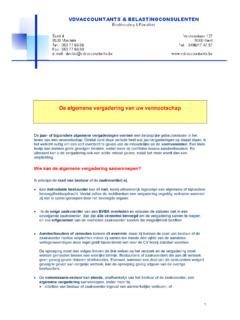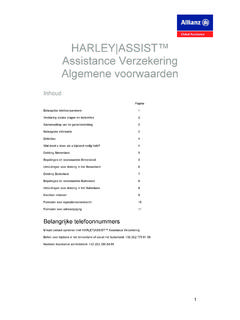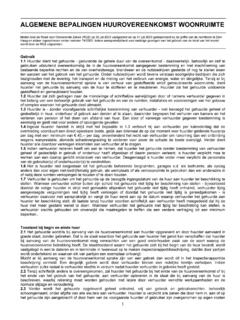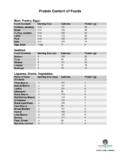Transcription of United Nations CRC Convention on the - ICCP Home
1 United Nations CRC/C/GC/17. Convention on the Distr.: General 18 March 2013. Rights of the Child ADVANCE UNEDITED. VERSION. Original: English Committee on the Rights of the Child General comment No. 17 (2013). The right of the child to rest, leisure, play, recreational activities, cultural life and the arts (Article 31). GE. CRC/C/GC/17. Contents Paragraphs Page I. 1-6 3. II. Objectives of the General Comment .. 7 3. III. The significance of article 31 in Children's 8-13 4. IV. Legal analysis of article 14-15 5. 1. States parties recognize the right of child '.. 5. 2. States parties shall respect and promote the right of the child .. 7. V. Article 31 in the broader context of the Convention .. 16-31 7. VI. Creating the context for the realisation of article 31 .. 32-47 10. VII. Children requiring particular attention in order to realise their article 31 rights.
2 48-53 15. VIII. States parties' 54-59 17. IX. 60-61 22. 2. CRC/C/GC/17. I. Introduction 1. The importance of play and recreation in the life of every child has long been acknowledged by the international community, as evidenced by the commitment in the 1959 UN Declaration on the Rights of the Child that the child shall have full opportunity for play and recreation' and that society and public authorities shall endeavour to promote the enjoyment of this right'. This commitment was further strengthened in the Convention on the Rights of the Child (the Convention ) which explicitly recognises the right of the child to rest, leisure, play, recreational activities and free and full participation in cultural and artistic life (Article 31). 2. However, the Committee, in its reviews of implementation of the rights of the child under the Convention , is concerned by the poor recognition given by States to Article 31.
3 Rights. Poor recognition of their significance in the lives of children results in lack of investment in appropriate provision, weak or non-existent protective legislation and invisibility of children in national and local level planning. In general, where investment is made, it is in the provision of structured and organised activities. Equally important is the need to create time and space for spontaneous play, recreation and creativity, and the promotion of societal attitudes that support and encourage such activity. 3. The Committee is particularly concerned about the difficulties faced by particular categories of children in the matters of enjoyment and in the conditions of equality, of the rights defined in article 31, especially girls, poor children, children with disabilities, indigenous children, children belonging to minorities, etc.
4 4. Furthermore, profound changes in the world in which children are growing up are having a major impact on their opportunity to enjoy Article 31 rights. The urban population, especially in developing countries, is increasing significantly as is the worldwide presence of violence in all its forms at home, in schools, through mass media and in the streets, with implications, alongside the commercialisation of play provision, is influencing the forms of children's engagement in recreation, as well as cultural and artistic activities. For many children within both rich and poor countries, child labour, domestic work, or increasing educational demands serve to reduce the time available for enjoyment of these rights. 5. This General Comment has been developed to address these concerns, raise the profile, awareness and understanding among States as to the centrality of Article 31 rights in the life and development of every child and to elaborate measures to ensure their implementation.
5 Article 31 rights have universal application in the diversity of communities and societies of the world and respect the value of all cultural traditions and forms. The rights are to be enjoyed by every child, regardless of the place where he/she lives, his/her cultural background or his/her parental status. 6. The General Comment does not address the issue of sport; sport is a major issue in its own right and is only touched on tangentially here. In respect of cultural life, it focuses primarily on aspects related to creative or artistic life, rather than the broader definition embraced within Article 30, the right of the child to enjoy his or her own culture. II. Objectives of the general comment 7. The present General Comment seeks to enhance the understanding of the importance of Article 31 for children's well-being and development, to ensure and strengthen the application of and respect for the child's right referred to in Article 31 and for the realisation of other rights in the Convention , and the implications for the determination of: 3.
6 CRC/C/GC/17. (a) Consequent obligations of States in the elaboration of all implementation's measures, strategies and programmes aimed at the realisation and full implementation of the rights of the child therein defined;. (b) Role and responsibilities of the private sector, including companies working in the areas of recreation, cultural and artistic activities, as well as organizations of civil society providing such services for children; and (c) Guidelines for all individuals working with children, in all actions undertaken, including for parents. III. The significance of article 31 in children's lives 8. Article 31 must be understood holistically, both in terms of its constituent parts, and also in its relationship with the Convention in its entirety. Each element of Article 31 is mutually linked and reinforcing, and, when realised, serves to enrich the lives of children.
7 Together, they describe conditions necessary to protect the unique and evolving nature of childhood. Their realisation is fundamental to the quality of childhood, to children's entitlement to optimum development, to the promotion of resilience, and to the realisation of other rights. For example, environments in which play and recreational opportunities are available to all children provide the conditions for creativity; opportunities to exercise competence through self-initiated play enhances motivation, physical activity and skill development; immersion in cultural life enriches playful interactions; rest ensures that children have the necessary energy and motivation to participate in play and creative engagement. 9. Play and recreation are essential to the health and well-being of children and promote the development of creativity, imagination, self-confidence, self-efficacy, and physical, social cognitive and emotional strength and skills.
8 They contribute to all aspects of learning1. They are a form of participation in everyday life, and are of intrinsic value to the child, purely in terms of the enjoyment and pleasure they afford. Research evidence highlights that playing is also central to children's spontaneous drive for development, and that it performs a significant role in the development of brain, particularly in the early years. Play and recreation facilitate children's capacities to negotiate, regain emotional balance, resolve conflicts, and make decisions. Through their involvement in play and recreation, children learn by doing, explore and experience the world around them, experiment with new ideas, roles, and experiences, and in so doing, learn to understand and construct their social position within the world. 10. Both play and recreation can take place when children are on their own, together with their peers, or with supportive adults.
9 Children's development can be supported by loving and caring adults as they relate to children through play. Participation with children in play provides adults with unique insights and understanding into the child's perspectives. It builds respect between generations, contributes to effective understanding and communication between children and adults, and affords opportunities to provide guidance and stimulus. Children benefit from recreational activities involving adults, including voluntary participation in organised sports, games, and other recreational activities. However, the benefits are diminished, particularly in developing creativity, leadership, and team spirit, if control by adults is so pervasive that it undermines children's own efforts to organise and conduct their play activities. 1. Education for the twenty-first century: issues and prospects, UNESCO, Paris, 1998.
10 4. CRC/C/GC/17. 11. Involvement in a community's cultural life is an important element of children's sense of belonging. Children inherit and experience the cultural and artistic life of their family, community and society and through that process, discover and forge their own sense of identity. They also contribute to the stimulation and sustainability of cultural life and traditional arts. 12. In addition, children reproduce, transform, create and transmit culture through, for example, their imaginative play, songs, dance, animation, stories, painting, games, street theatre, puppetry, festivals, etc. As they gain understanding of the cultural and artistic life around them from adult and peer relationships, they translate and adapt its meaning through their own generational experience. Through engagement with their peers, children create and transmit their own language, games, secret worlds, fantasies, and other cultural activities.





